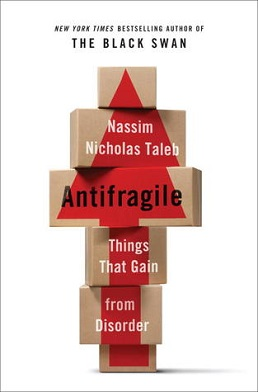Cloud Foundry: Anti-fragility on the new complexity frontier
The Computer Weekly Open Source Insider blog recently sat down with Ram Iyengar, chief evangelist at the Cloud Foundry Foundation.
Iyengar says that we’re staring at a new frontier of complexity.
AI agents, LLMs, and Model Context Protocol (MCP) Servers are the new tools in our arsenal… and the MLOps workflows that manage them are the next labyrinth for developers to navigate.
He suggests that AI applications push beyond just code and services.
“The reliability of a modern application hinges on managing its configuration, datasets, and context as well. This added baggage means that what was once a monumental task is now a superhuman one. Not for the faint-hearted, “said Iyengar.
As someone once said, “The problem with software is that it’s just so damn hard to build.”
“This rings truer than ever as we tackle the complexities of AI-powered applications. The sheer volume of moving parts – from versioning datasets to ensuring model dependencies are met – requires an orchestration that goes far beyond traditional DevOps,” suggests Iyengar,
The anti-fragile advantage
This backdrop is precisely why the core premise of Cloud Foundry exists, says the evangelist.
It’s not just about simplifying deployment; it’s about building systems that are “anti-fragile” to use a term from author Nassim Nicholas Taleb who said, “There is no word for the exact opposite of fragile. Anti-fragility is beyond resilience or robustness. The resilient resists shocks and stays the same; the antifragile gets better.”
 “A platform like open source Cloud Foundry helps us build applications that can handle the inherent volatility of AI workloads. By providing a stable, managed environment, it allows our AI systems to not just survive, but thrive under the pressure of continuous change and development,” said Iyengar.
“A platform like open source Cloud Foundry helps us build applications that can handle the inherent volatility of AI workloads. By providing a stable, managed environment, it allows our AI systems to not just survive, but thrive under the pressure of continuous change and development,” said Iyengar.
Taming costs, complexity & chaos
The stakes are higher now, too. AI models and their colossal datasets can send compute and storage costs skyrocketing if not managed with ruthless efficiency. In this new world, a simplified developer experience isn’t just a luxury; it’s a strategic necessity. The team says that operators and developers need tools to:
- Optimise resource consumption: By making it easy to consume only what is needed for agents and models, it helps keep those massive cloud bills in check.
- Standardise workflows: It provides a consistent, repeatable way to deploy and manage AI components, reducing the cognitive load on engineering teams.
- Enhancing collaboration: Developers can focus on building agents, while platform operators ensure the underlying infrastructure is efficient and reliable.
Need for agentic orchestration
AI-powered agents – purpose-built, reasoning-first applications – are poised to become the dominant architecture pattern of 2025. From natural‑language interfaces into IT systems to business‑process automation, DevOps helpers, or healthcare assistants, agents only need one thing to flourish: easy deployment and integration into existing systems.
“For over a decade, Cloud Foundry has delivered an opinionated, open-source PaaS platform that brings speed, security, and developer self-service to enterprise cloud adoption. With a simple cf push, developers sidestep container config, orchestration, and scale – letting them focus squarely on business logic and user needs. Meanwhile, platform operators manage the infrastructure once, for all apps,” said Iyengar.
Now, agents require more than mere compute – they need reasoning engines (LLMs), access to domain-specific data, short‑term conversational memory, and integration with real‑time services.
He says that foundation models alone, while impressive, struggle with hallucinations, bias, and outdated data. To build safe, useful applications, we need an orchestration layer that can reason, retrieve and act under governance… and suggests that with his firm’s platform, the following elements are possible:
- Developers work in familiar languages (Java, Python, Spring Boot) and push apps.
- It provides service bindings – notably to approved LLMs, embedding services, vector stores, and MCP-based agents – via the Open Service Broker API.
- Security, governance, observability, and scaling come baked in.
- Nothing more than configuration is needed – apps can go from prototype to production in minutes.
In a recent live demo, a Spring Boot chat app grew into a full-fledged agent:
- Bind to an enterprise-approved chat model.
- Attach a vector store and embedding model for retrieval-augmented generation (RAG).
- Connect to MCP-enabled APIs for real-time tasks (e.g., fetching live Bitcoin prices).
All of this is handled through standard Cloud Foundry bindings with no custom and no infrastructure scrubbing.
Future direction
Here is the key: ideas aren’t the bottleneck – operations are.
Most organisations already know how AI could improve their workflows; the challenge is delivering those tools without months of DevOps overhead.
“The future isn’t about throwing more complexity at the problem. It’s about building a better experience – one that lets us harness the power of AI without getting bogged down by the operational overhead. Our focus on the developer experience is not just a throwback; it’s a look forward. It’s the simple, elegant solution for a future filled with complicated, powerful technology,” said Iyengar.



